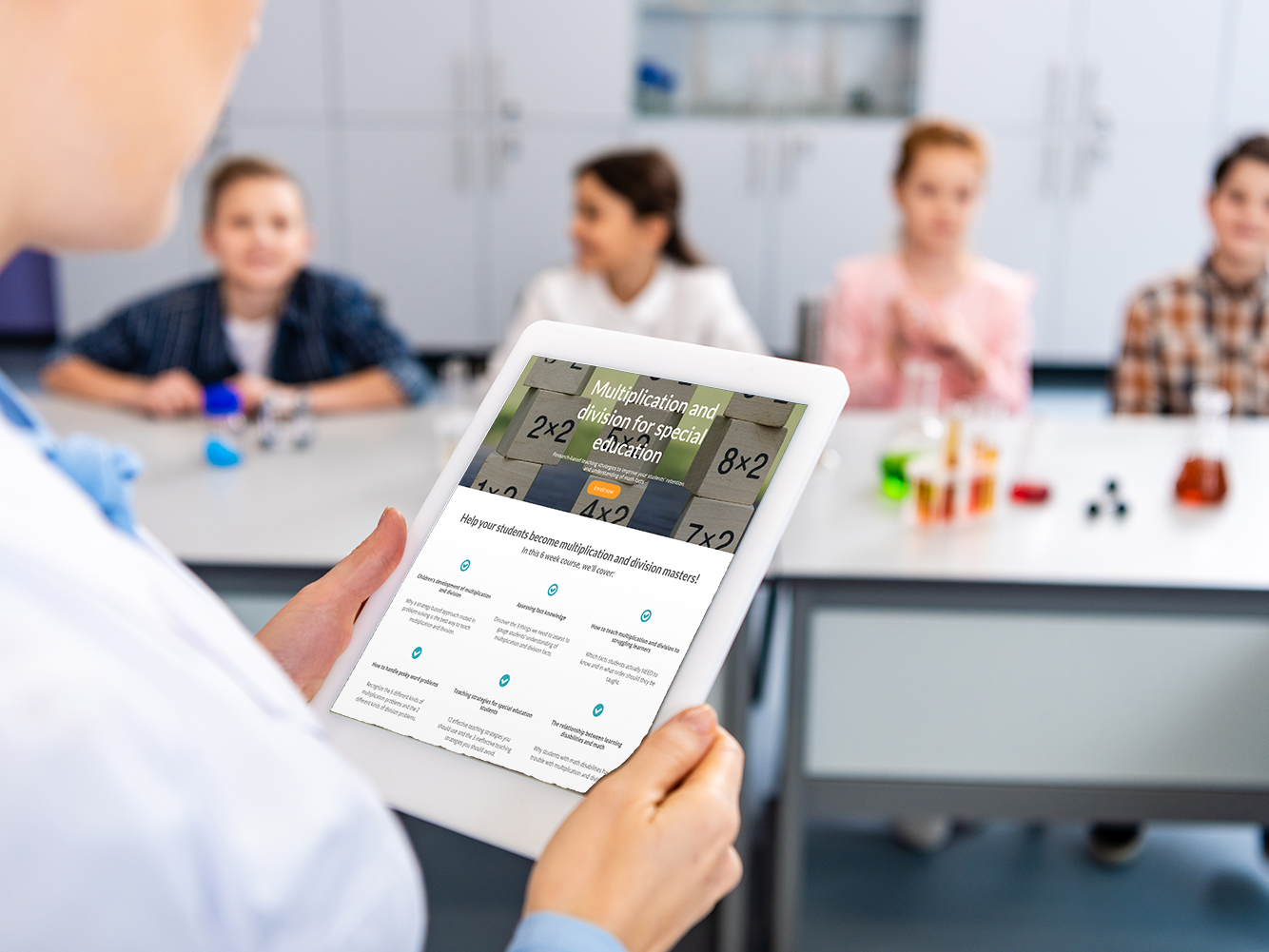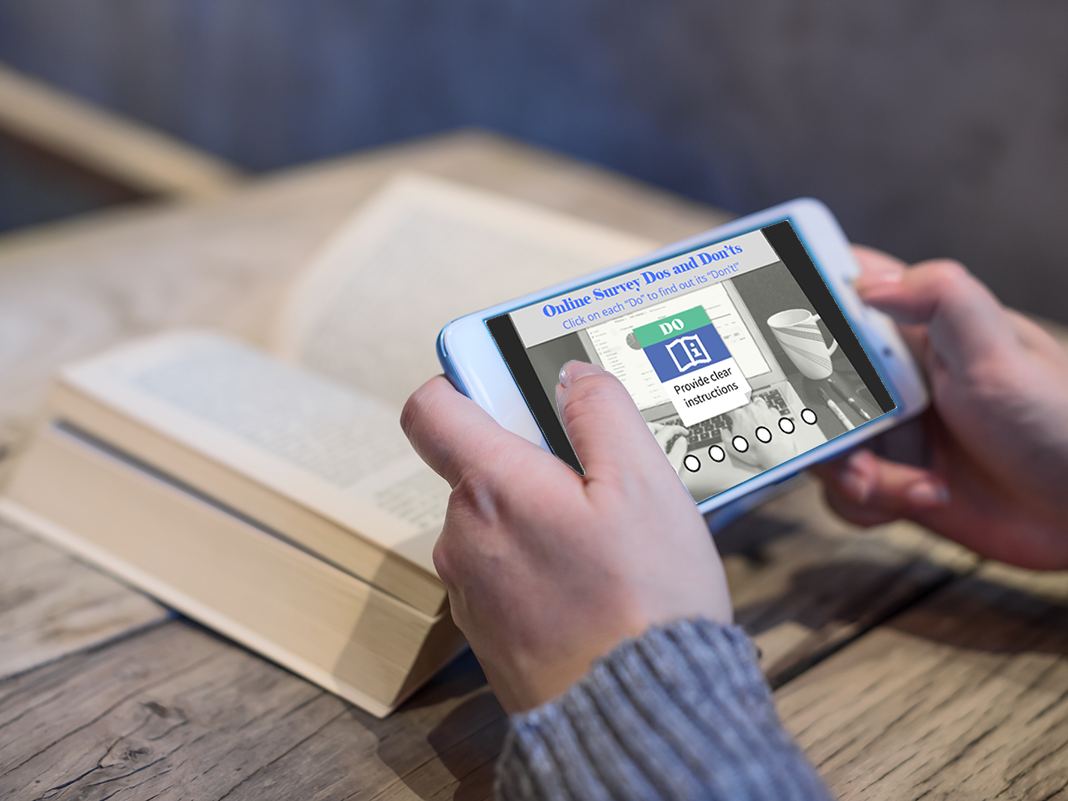This seminar-style and scenario-based eLearning simulation helps employees learn about the history and types of tea to better serve their customers and increase tea sales. The goal was to improve employees' customer success and retention strategies.
Responsibilities: Instructional Design, eLearning Development, Content creation, Evaluation
Target Audience: Employees of a tea store
Tools Used: Articulate Storyline, Adobe Illustrator, Miro, Qualtrics
Problem:
Despite a surge in foot traffic at a local tea store during the spring season, sales were not meeting expectations. Upon conducting exploratory research, I discovered that employees lacked the knowledge necessary to provide personalized service and recommend teas that matched customers' preferences. As a result, the store was missing out on opportunities to increase customer satisfaction and sales.
Solution:
I used research data and interviews with a subject matter expert to design an eLearning experience that contained seminar-style content and culminated in a scenario-based simulation.
My Design Process
Analyze
To better understand the challenges faced by a local tea store owner, I interviewed Julie, a subject matter expert with extensive experience in the industry. Through our conversation, Julie explained the store's difficulty in achieving sales growth despite increased foot traffic and we set the following goal:
GOAL: to increase the number of customers purchasing tea by 40%.
We discussed the specific barriers preventing the store from reaching this objective and identified the behaviors that employees needed to exhibit to drive sales. To further inform the training approach, I also observed employees in action at the store.
Using this data, I developed an action map to guide the creation of the training program and wrote the following four objectives:

Action Map
Learning Objective #1: Product Knowledge
By the end of this learning experience, employees will be able to name and describe the different types of tea, their flavor profiles, and brewing methods so that they can confidently recommend teas to customers.
Learning Objective #2: Storytelling
By the end of this learning experience, employees will be able to craft stories about the teas, such as their origins, history, and interesting facts that make the experience more memorable and engaging for customers.
Learning Objective #3: Personalization
By the end of this learning experience, employees will be able to create open-ended questions that help them understand the customer's preferences and suggest teas that meet those preferences.
Learning Objective #4: Listening Skills
By the end of this learning experience, employees will be able to listen carefully to customer feedback, ask questions to understand customer needs and adjust their recommendations accordingly.
Design
After consulting with the subject matter expert, I planned and organized the content in a storyboard.
The first half of the eLearning experience targeted objectives #1 and #2 by increasing employees' knowledge of tea.
The second half of the eLearning experience targeted objectives #3 and #4 by providing branching scenarios, giving employees the opportunity to practice their customer success and retention skills.
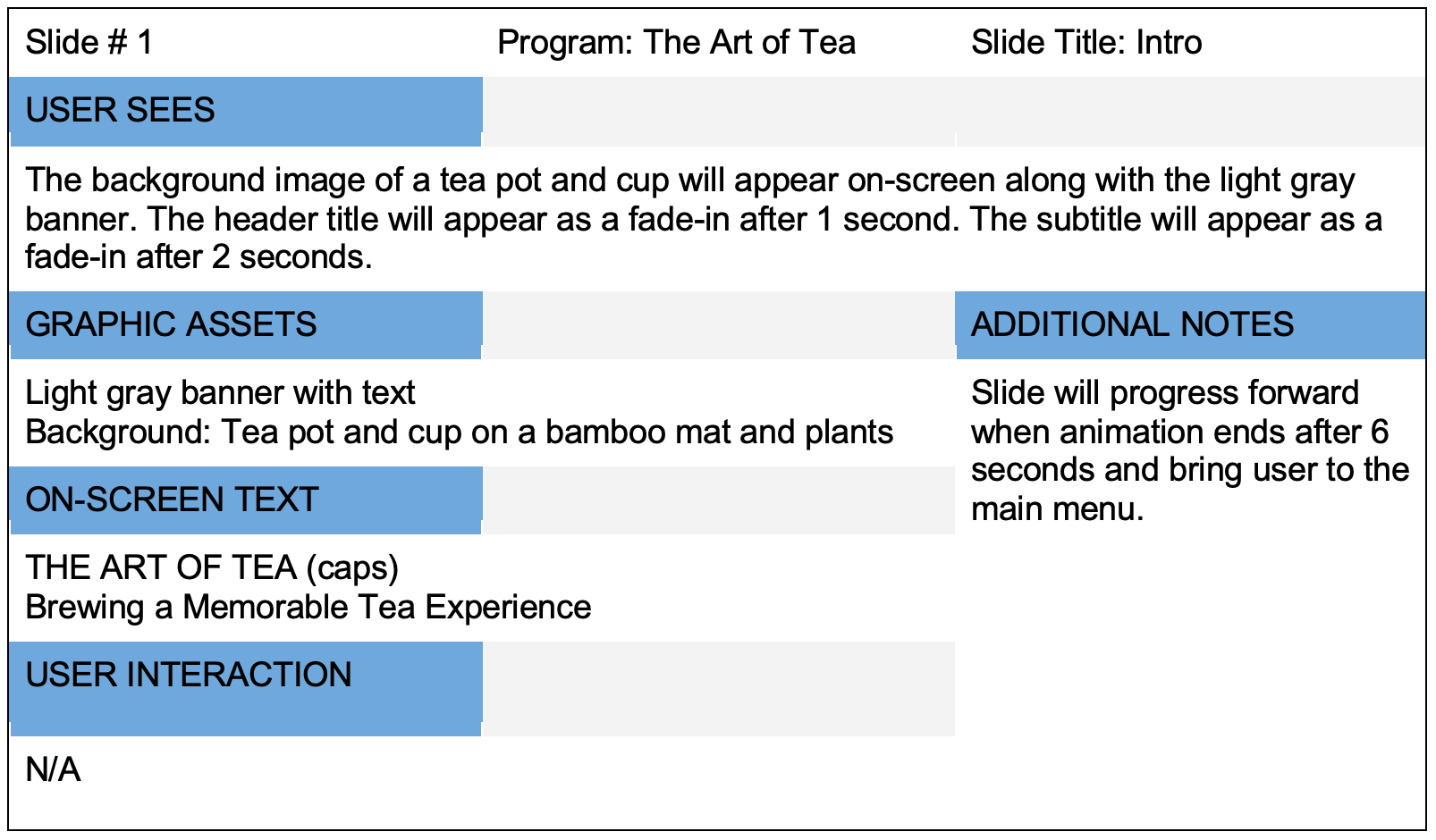
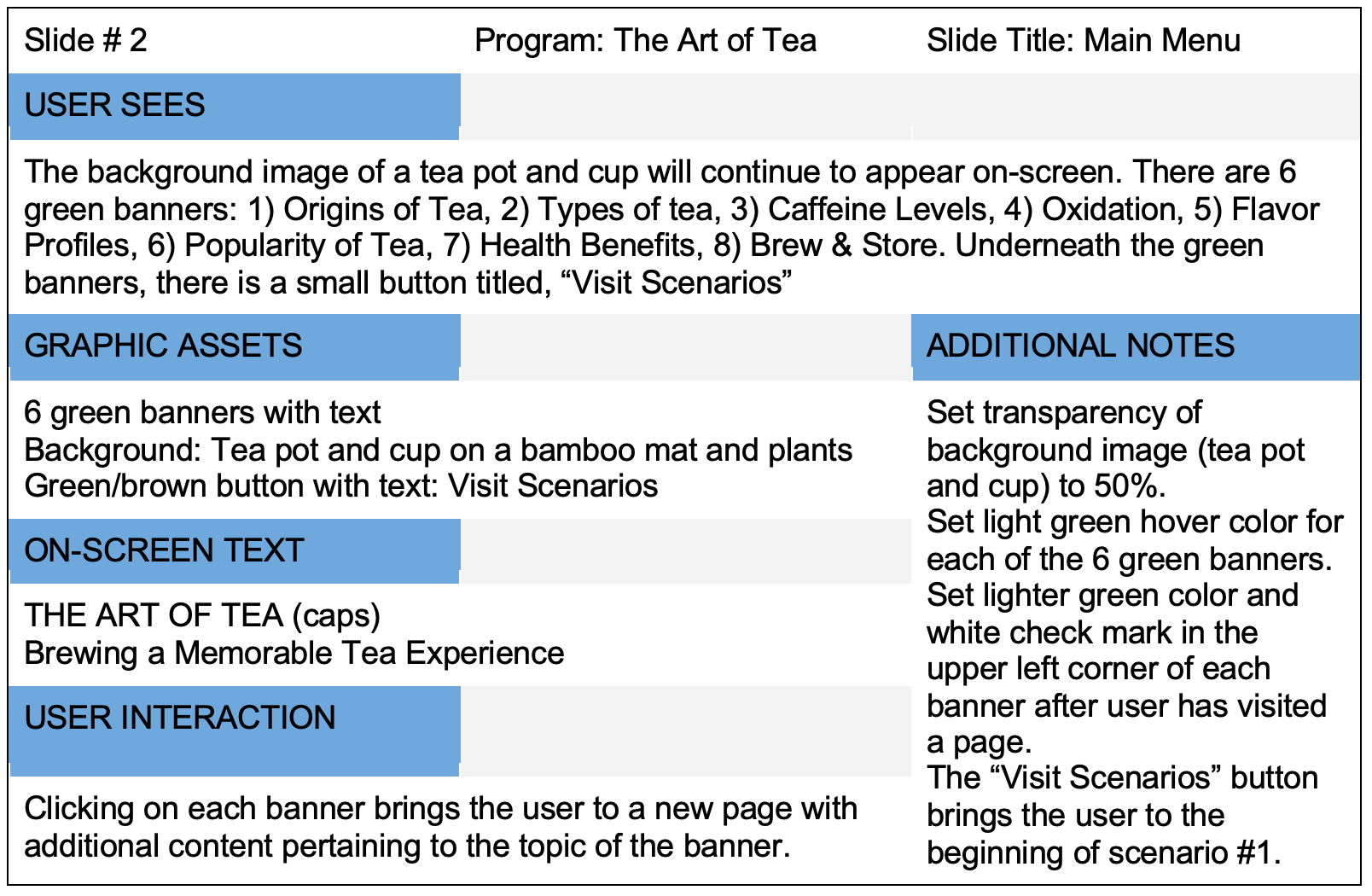
Storyboard of branching scenarios
Design Approach
I incorporated adult learning theories to ensure that the training was effective and engaging. For example, I used scenario-based learning to provide learners with opportunities to apply their knowledge in realistic situations.
The use of branching scenarios allowed for personalized learning experiences, providing immediate feedback and enabling learners to adjust their responses based on their individual needs and preferences.
Develop & Implement
I developed the final product using Storyline 360. I customize the colors and fonts for a consistent look and feel. To add engagement, I included a variety of elements such as:
- labeled graphic interactions
- scrolling panels
- tab interactions
- drag and drop quiz
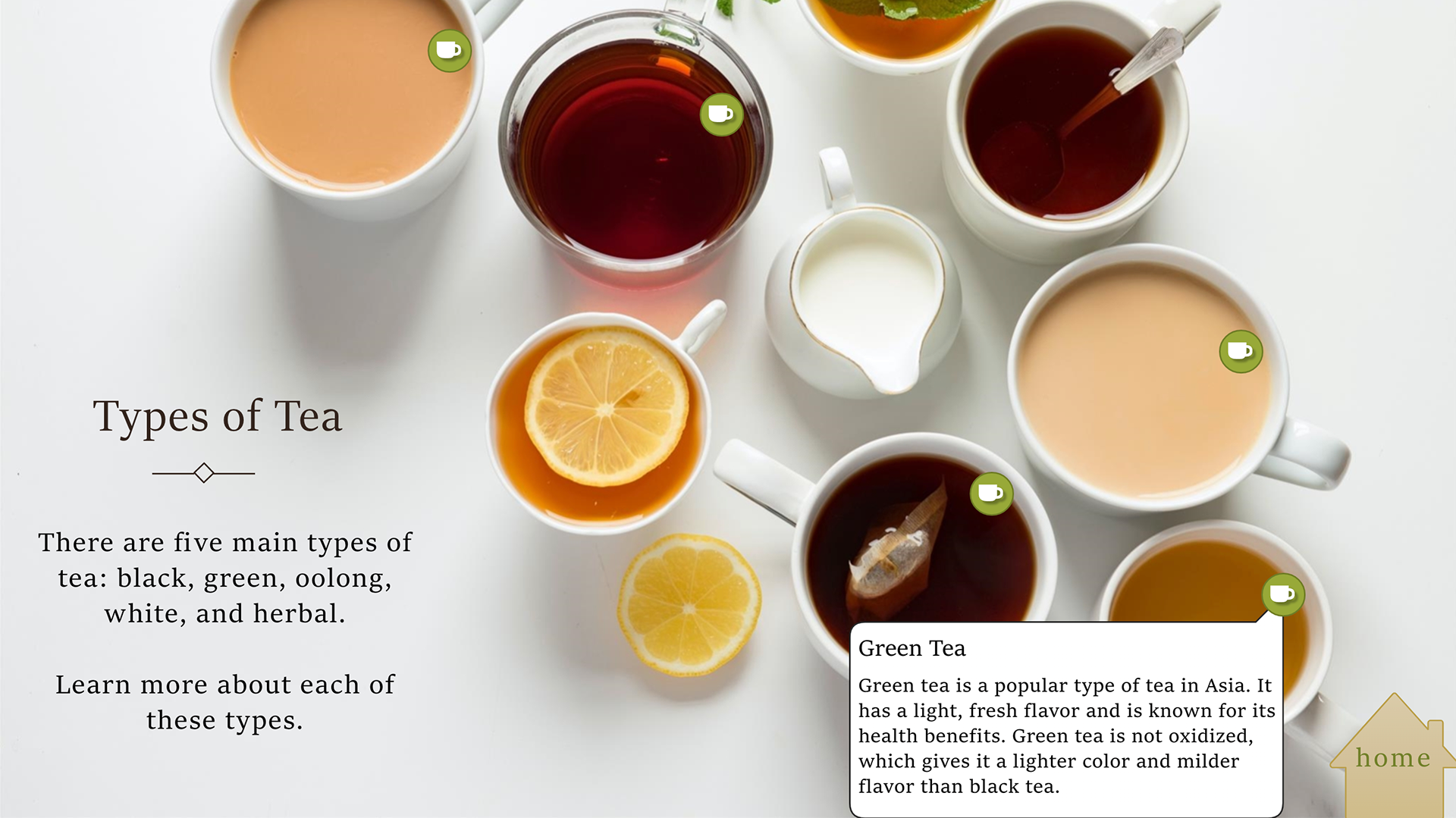
Labeled graphic interaction
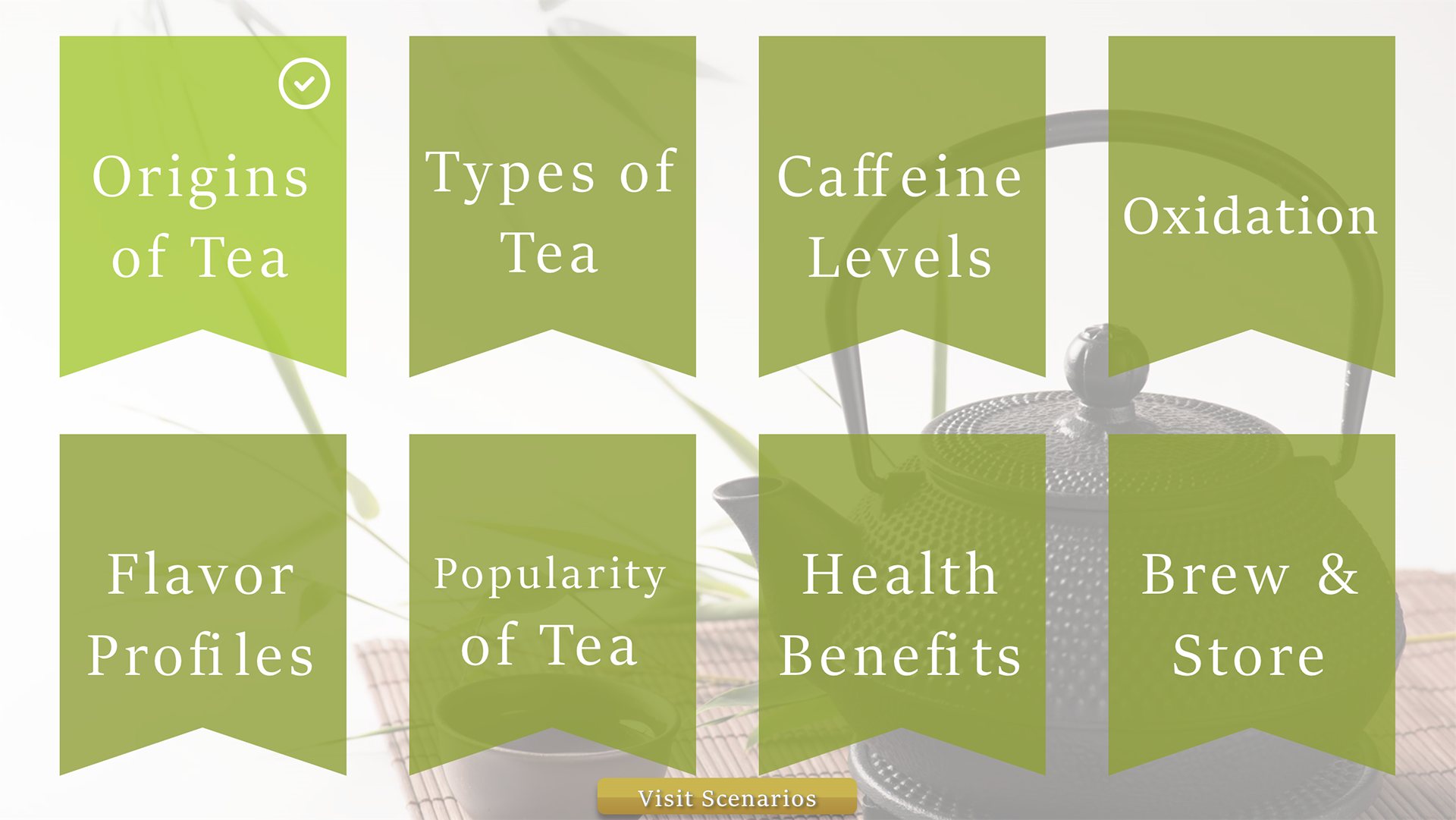
Hover and visited indicators

Scrolling panels

Tab interaction
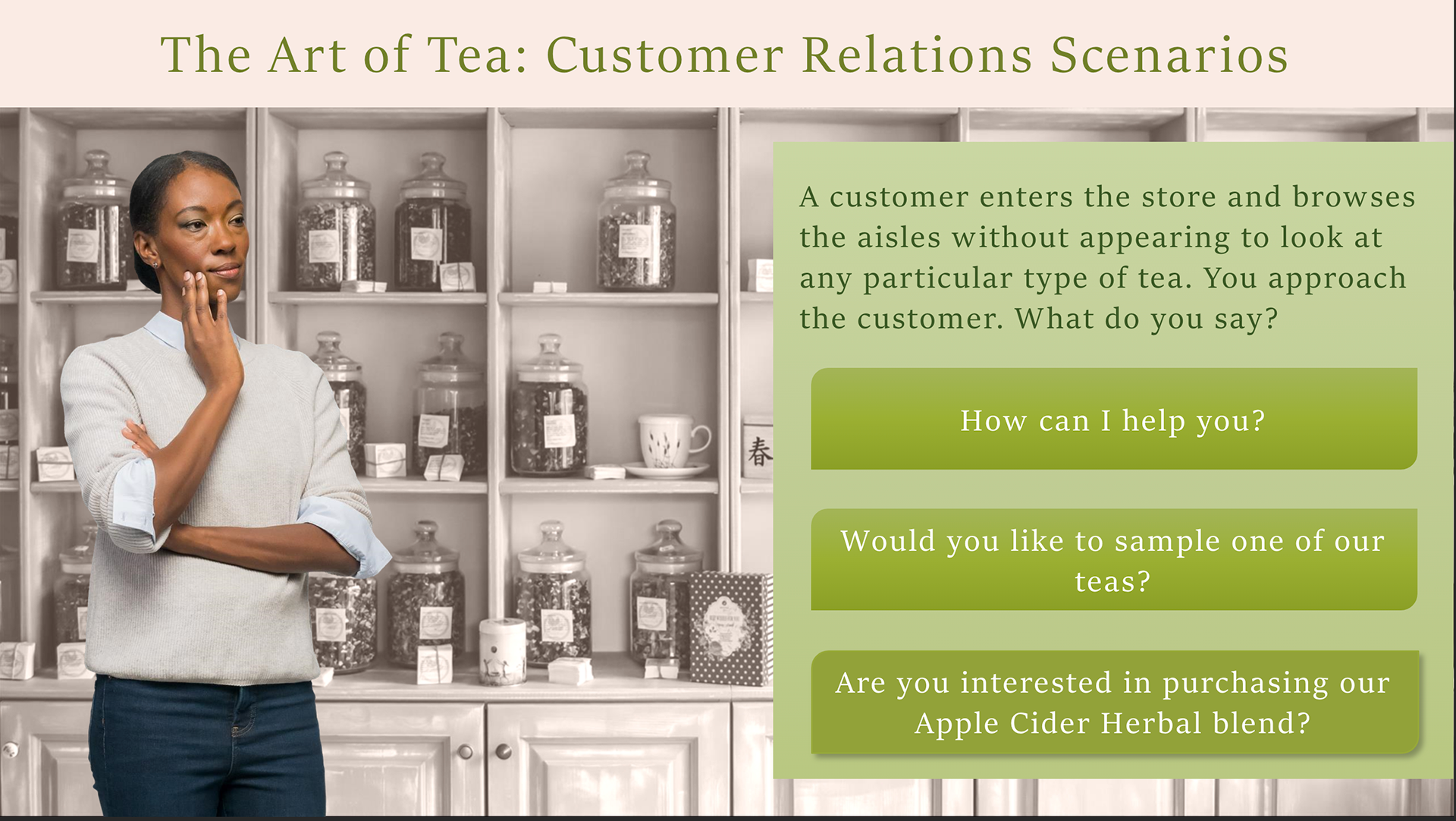
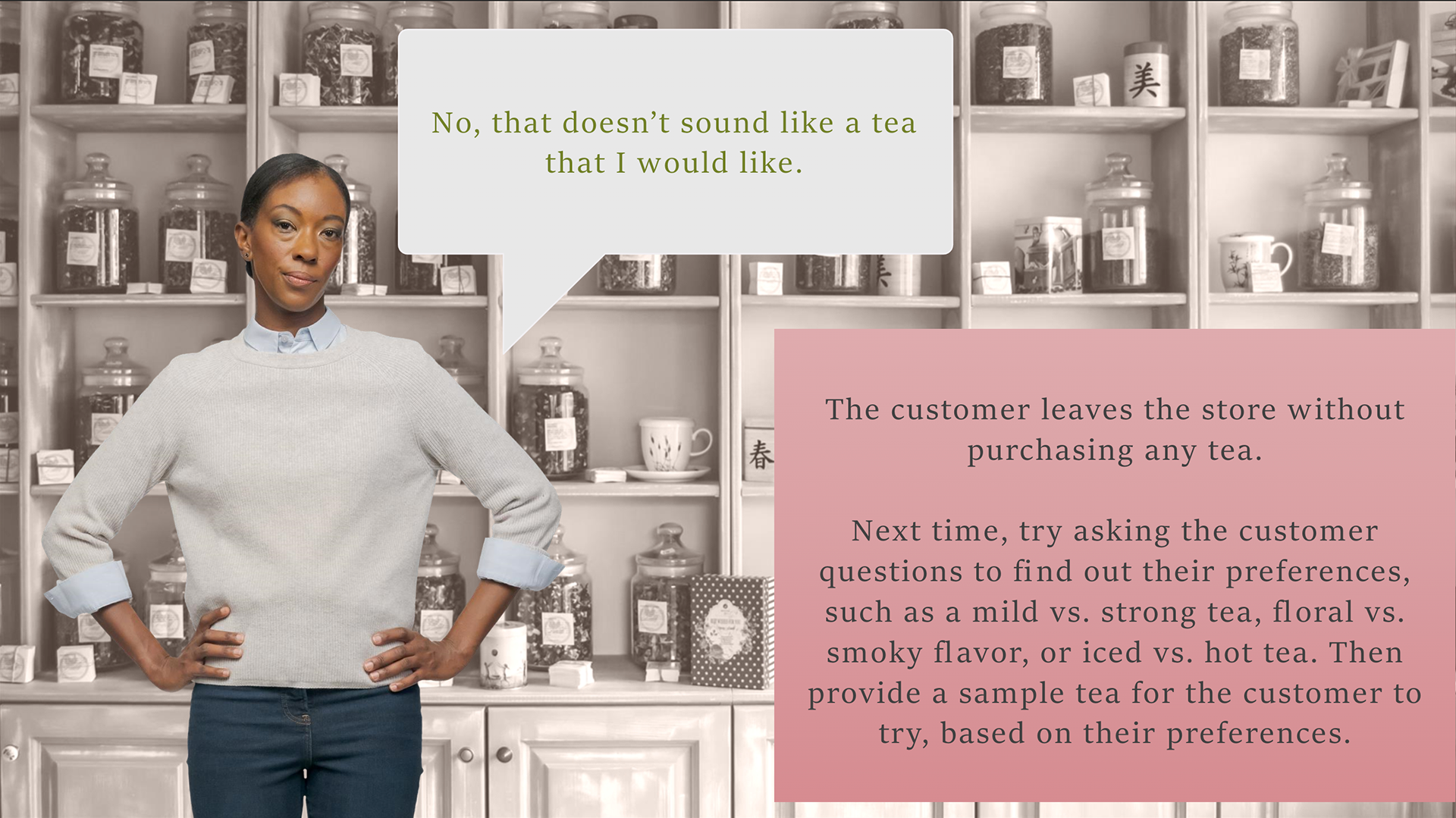
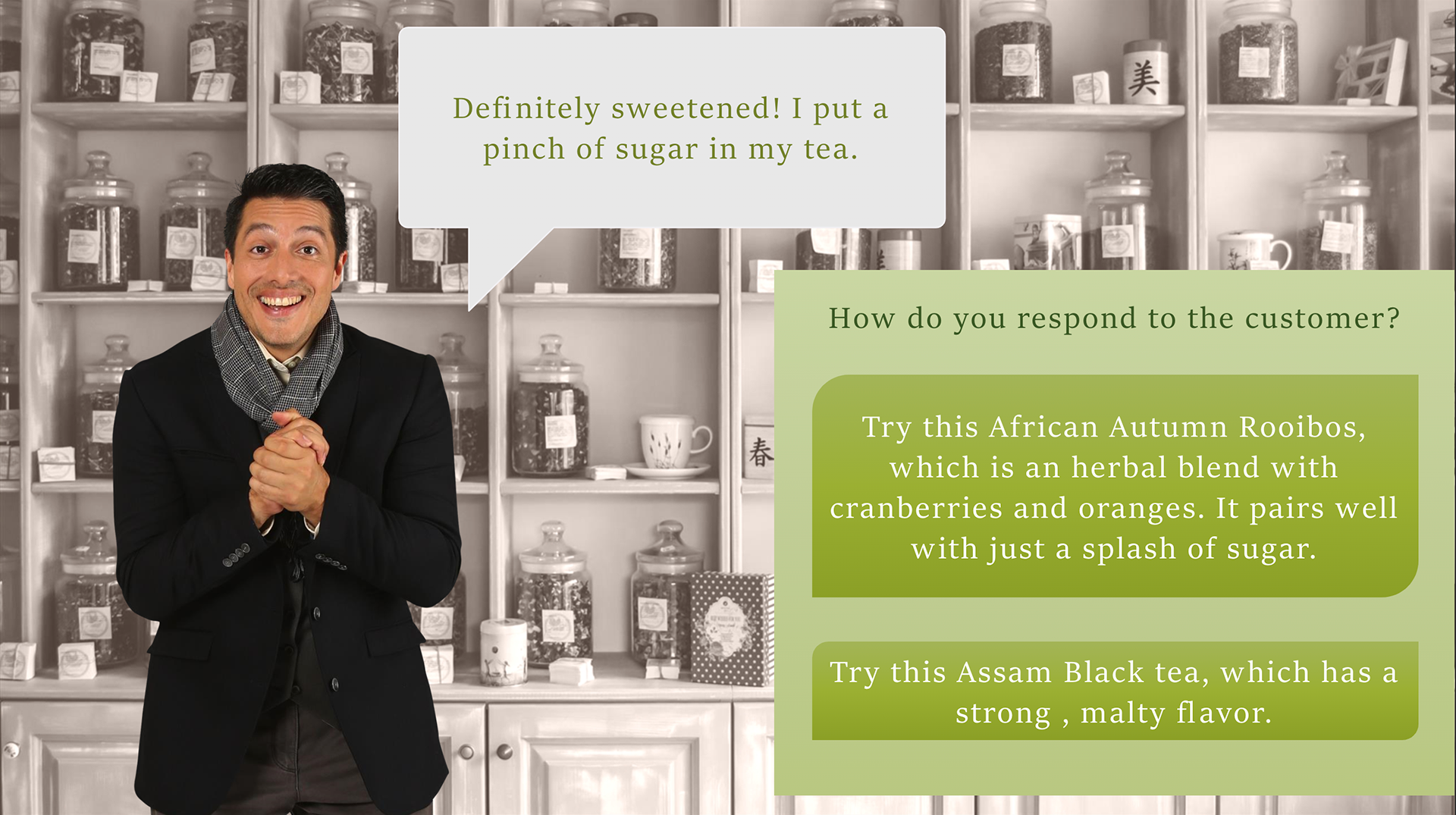
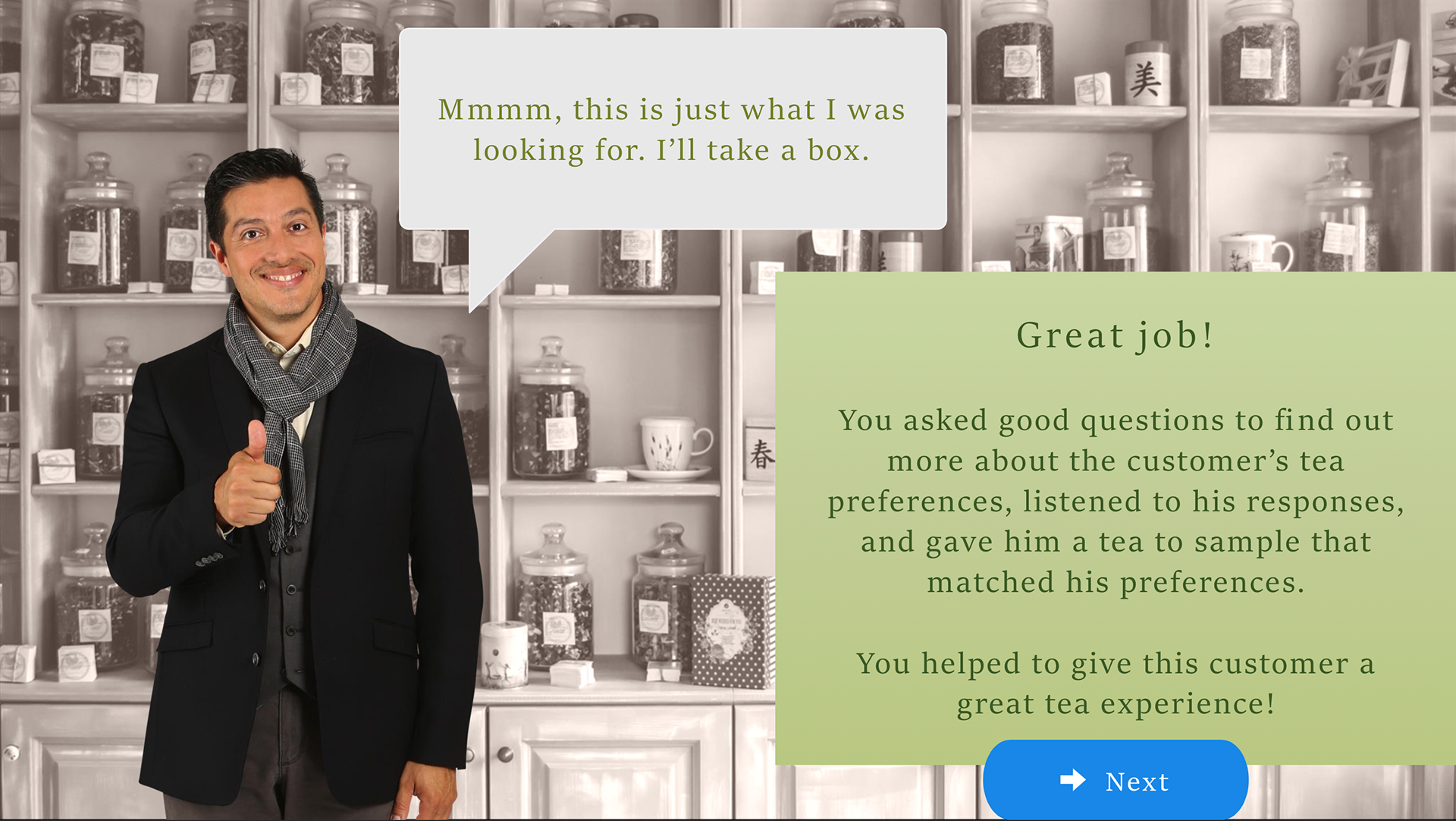
Branching scenarios
At the end of the eLearning experience, the branching scenarios allowed employees to practice their customer success and retention skills in the context of realistic situations. They were given feedback about their choices to help them better understand the elements of customer success and retention.
Results and Takeaways
The tea store eLearning experience has been successfully delivered to the client and is being integrated into their employee training program.
By using a performance-oriented action mapping approach, the training focuses on reinforcing the actions that employees need to perform to improve their knowledge of tea and customer service.
This active learning approach, with its scenario-based simulations and personalized feedback, is designed to translate directly into better customer service and sales performance on the job.
This case study demonstrates my ability to leverage instructional design and eLearning expertise to create meaningful and impactful training experiences that drive performance improvement in real-world contexts.


